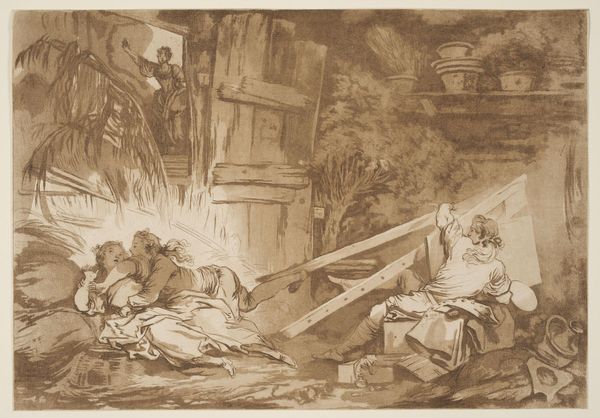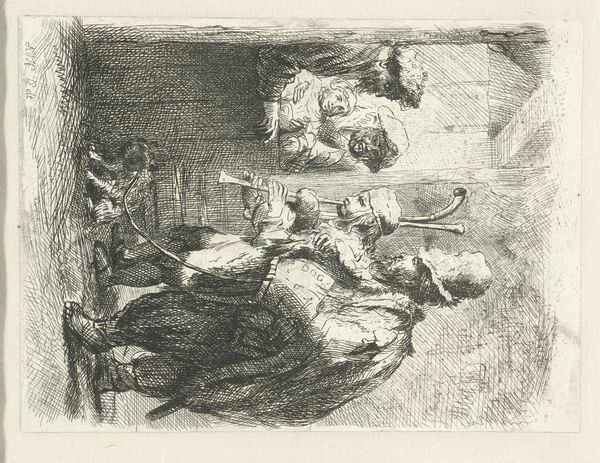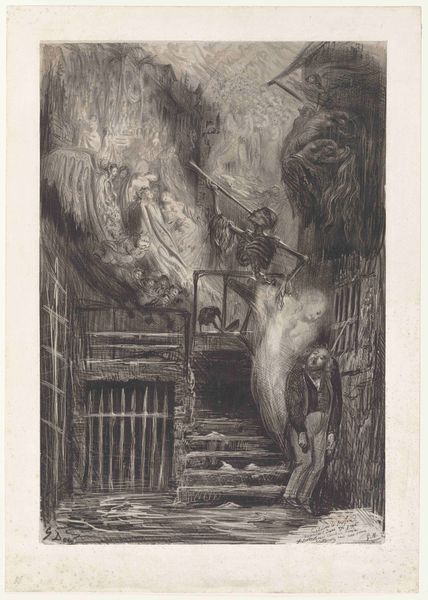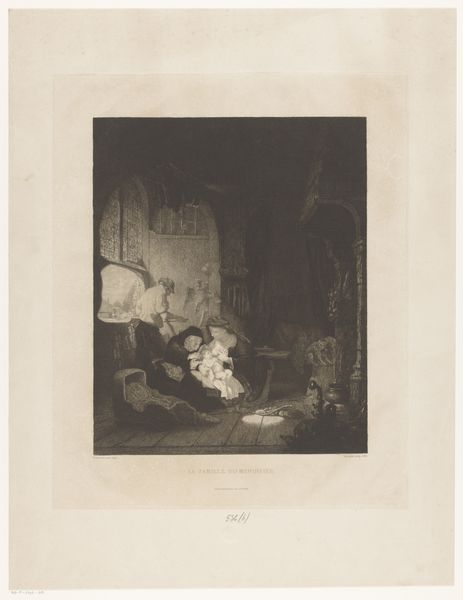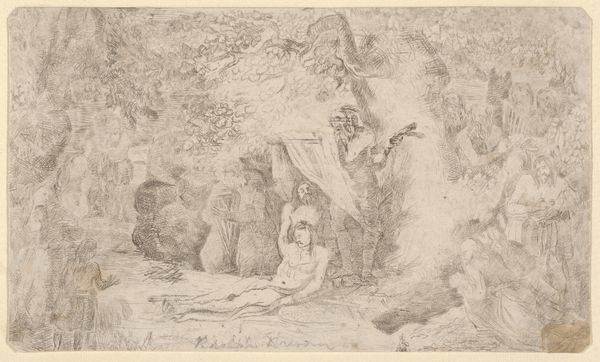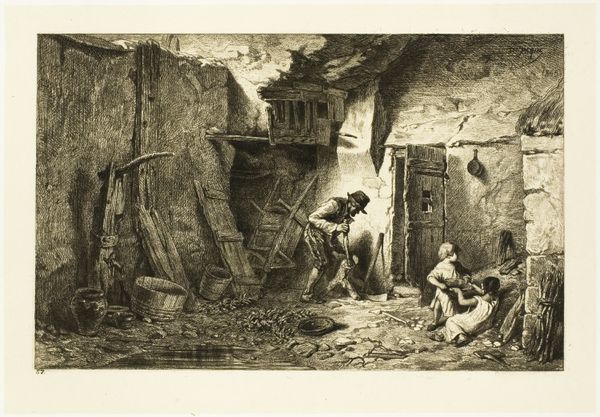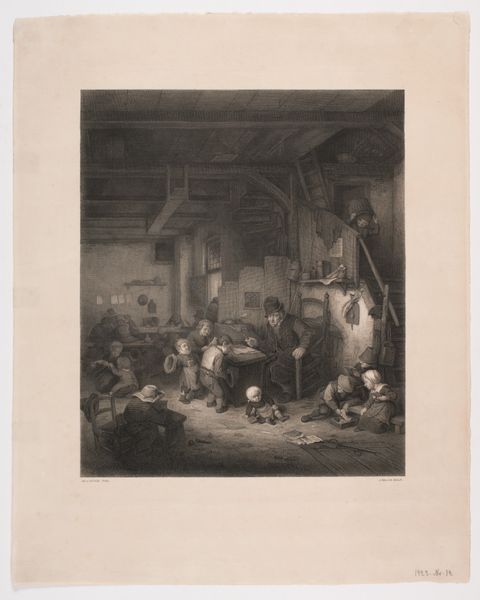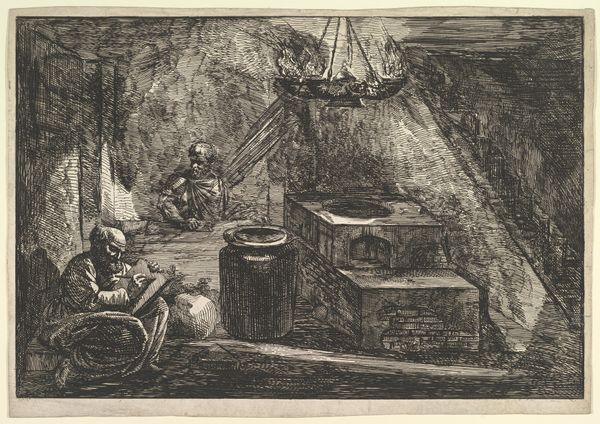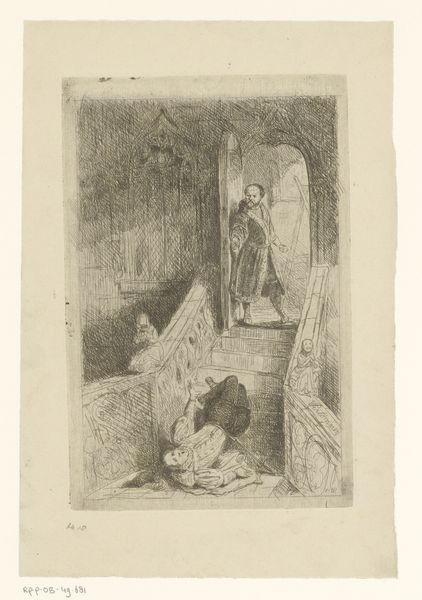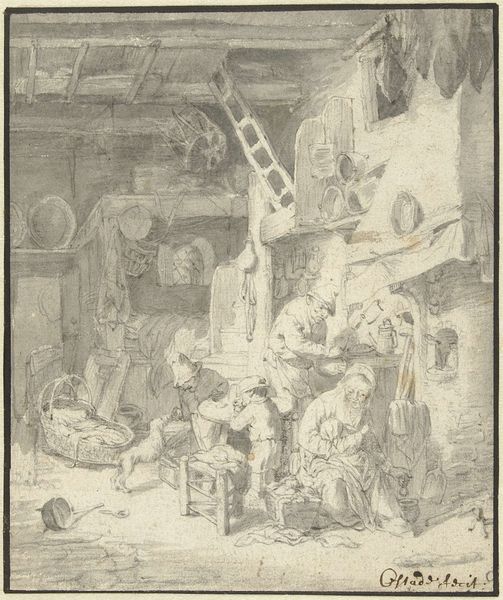
Jonge struikelende man valt op een vrouw die wordt geschilderd c. 1766
0:00
0:00
francoisphilippecharpentier
Rijksmuseum
drawing, print, etching
#
drawing
#
narrative-art
# print
#
etching
#
figuration
#
watercolour illustration
#
genre-painting
#
history-painting
#
rococo
Dimensions: height 298 mm, width 414 mm
Copyright: Rijks Museum: Open Domain
Curator: This etching, “Jonge struikelende man valt op een vrouw die wordt geschilderd,” created around 1766 by François Philippe Charpentier, strikes me immediately with its Rococo sensibility. It feels lighthearted and chaotic at once. Editor: Chaos is certainly the word. Look at how the male gaze functions here— the clumsiness of the male figure disrupting the scene underscores the performative aspects of courtship. This is rife with gendered power dynamics. Curator: Tell me more. I’m primarily drawn to the formal composition. The way the artist utilizes a limited palette of sepia tones and varied etching techniques. Consider the clear, firm lines versus the looser, softer crosshatching used to create depth and shadow. It all points toward an intended layering and a sense of spatial recession. Editor: I read something far less delicate and composed here. The awkward tumble seems deliberately constructed to underscore the precariousness of the female artist, disrupted, literally fallen upon by this man’s actions. How can she assert agency under the male’s overwhelming and literal weight? Where is her voice here? Curator: But doesn’t this reading ignore the genre tradition it resides in? It belongs within the traditions of lighthearted, domestic mishaps characteristic of French Rococo! Perhaps it speaks less about overwriting agency and more about capturing fleeting, imperfect moments of domesticity? Editor: Perhaps, but to simply accept the traditional framing risks sidestepping the obvious critique here: what does it say that in a world depicted through male creation we still only get to witness female stories interrupted by them, silenced by them? Even the interior here is less personal and more of an exposition of available props of ‘domesticity.’ Curator: That’s a valid viewpoint, certainly, especially for contemporary audiences. It adds an additional interpretive layer. What strikes me now is the deliberate staging involved here, this sense that behind these mishaps we are merely watching an allegorical performance of "life." Editor: Yes! Though, as a counterpoint, if that life privileges and gives access to the male artist, while obstructing the narratives of their female counterparts, then whose play are we actually watching, and to whose intended audiences, I wonder? Food for thought.
Comments
No comments
Be the first to comment and join the conversation on the ultimate creative platform.
